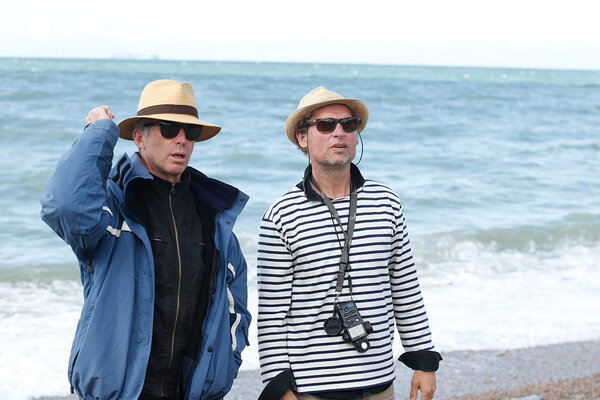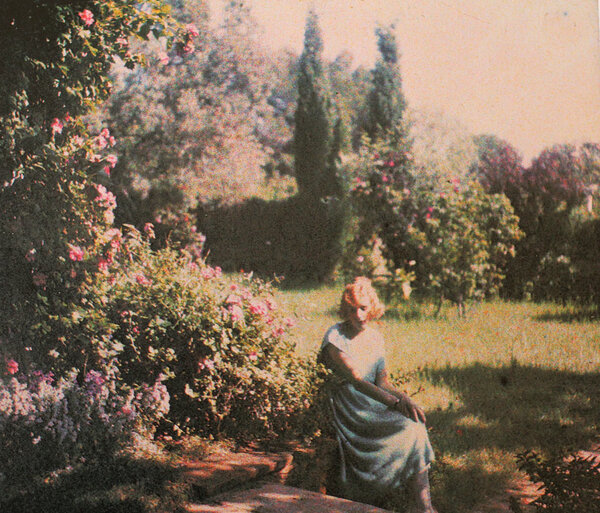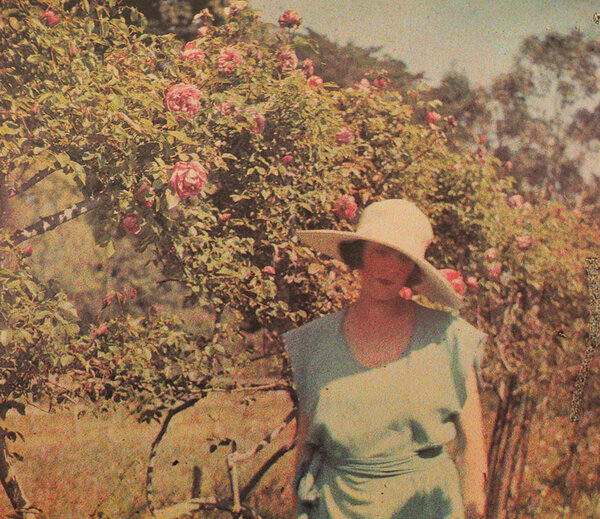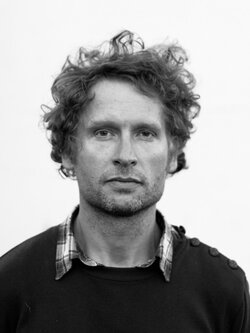Cinematographer Guillaume Deffontaines, AFC, discusses his work on “Slack Bay”, a film by Bruno Dumont
Slack is a zany crime comedy, set on the Bay of Slack, where Ma Loute Bréfort, 18, fisherwoman, mussel trapper, and contraband dealer, lives with her family whose male members are all mysteriously cannibals. The Bréfort family run rampant through the coastal scenery. They kidnap and devour the inhabitants of Lille-Roubaix-Tourcoing. (BB)
Starring Fabrice Luchini, Juliette Binoche, Valeria Bruni Tesdeschi, Brandon Lavieville, Raph, Didier Despres.

What a strange mix for Slack Bay...
Guillaume Deffontaines : The choice of non-professional actors, as for Le P’tit Quinquin, gave a certain tone to the first three weeks of filming. The trio of "Parisians" arrived on the fourth week. There was a kind of shock between the professional actors and the actors from the North of France, some of whom came to us via welfare offices. Bruno never changes his attitude, it doesn’t matter whether he’s dealing with professional actors or not. It was unsettling, for example for Fabrice Luchini, who didn’t have any close-ups. We had to adjust to a project on which we were unable to accommodate certain special requests...
The visual universe of Slack Bay is fully described in the screenplay...
GD : It looks a bit like a comic book. Bruno found a hundred postcards from 1910 that he used to illustrate his screenplay. We recognize the characters, Ma Loute, the townsfolk, the passers-by, and their movements, too. It’s amazing that there are so many cards of a place that has been completely lost ! It was a vacation spot : the Parisians used to go to Deauville, the townsfolk from the northern towns of Lille or Roubaix would go on holidays to the Bay of Slack. The townsfolk would live amongst the fisherman who would bring them to the beach..
Shooting required lots of preparation...
GD : Oh yes ! We needed a realistic look while incorporating a feeling from that time period. We went on location to find the views from the postcards. The challenge for me was to choose the right height, the right focal length, because everything has changed, the buildings, the fences, the flora. The Bay of Slack, our main set, used to be full of water at every high tide in 1910. Today, the sea no longer enters, except during very high tide days, the vegetation has changed significantly. But the houses have changed, too, and we found ourselves faced with a lot of anachronisms.
Scouting was extremely helpful to plan for bridging shots between the different sets. The Bay of Slack, but also the Saint-Michel area, where the fishermen are, were spread across several locations. Everything was recomposed artificially, and it was up to me to make things coherent in order to help the viewer understand the world he is located in.
While scouting, we did rehearsals filmed with doubles, to understand the connections between the two locations. This seems unconventional, but the film could only come together that way ! Lighting was complicated, managing the direction of the sunlight and the framing...
This is a period film that is rooted in realism... How did you choose the right tools ?
GD : The first time Bruno told me about the film, he had imagined it in anamorphic black-and-white. I think 35mm. But this is 2015, film stock has become expensive and hard to find and we know there will be a lot of special effects.


As I did research, I fell in love with Jacques-Henri Lartigue’s autochromes, which was the first colour process in the early 20th-century that depicted the provincial bourgeoisie. Suddenly, colour became much more evocative for the sets, the costumes, and the light. Bruno pointed out scenes in Death in Venice where the colors on the beach were very accurate. Without going into the Technicolor of Ryan’s Daughter, the storm scenes and the richness of the colours of the countryside became references for us.
In Bill Douglas’ Comrades, I found that the dirt, the mud, the earth of the peasant villages of that time were very well filmed with lots of contrast. The danger lies in the color of the skin tones. In all these films, the faces are warm, orange. Bruno wanted to keep the skin white and natural-looking. When I met his cast, I understood the importance of makeup.
I began comparing cameras and lenses using the first relics of our costume designer, Alexandra Charles’, period costumes. I tested the entire range of anamorphic lenses available on the market – from the most vintage to the most recent – on made-up faces. Finally, and against all odds, the lenses that work are the most modern ones : the anamorphic Masters with extraordinary sharpness and no distortion in order to meet Bruno’s desire of being able to read the faces, their expressions, and to simultaneously make the landscapes look sublime with a shallow depth of field.
The camera that I chose was the Alexa, because its softness offsets the contrast and sharpness of the Masters. I knew that with that camera, I had leeway to deteroriate the image and give it a patina like the costumes and the sets.
So, ready for shooting ?
GD : Everything was organized down to the millimetre ! Especially for the main set, which was completely dependent on the times of the tides. When you take the tides into account, the bay was only usable two hours a day, three days a month. Otherwise it’s just a quiet meadow with a river flowing in the middle. So we had two shooting sessions that were set for the times where the sea rose enough to bury the meadow. We were ready for the seawater, to get flooded. We had attached boats to the ground of the meadow so that we could film without the water.
When the water came, it would rise very quickly, and only then could we shoot the scenes where water was in the frame. You can’t make travelling shots on the surface of the water with a boat, because of the currents, the pitching of the boat… So Laurent Passera, the key grip, built an 8-metre-long rail that was suspended 80cm off of the ground. We baptized it the “Navirail” because it allowed us to put the camera just above the surface of the water. It was very convenient and quick, we’d just set it up and begin shooting.
We often used a Ladder Pad, which is a tripod that can rise up to 8 meters into the air in order not to capture what shouldn’t appear in the frame. For each shot, the production manager was there to check what was in the frame because every single bit of pollution in the frame costs a lot of money to fix in post-production ! Slack Bay looks like an expressionistic film with intense high-angle shots and low-angle shots that make the earth and the water very important.
Did you use natural lighting on the entire movie ?
GD : Yes, on the Bay of Slack, like on most locations of this film, Eric Gies only used his reflectors (which had to be pierced because of the wind !), a few diffusers, and black… Fortunately, the pier was south facing. We worked with the sun as a backlight. I was often glued to the instruments : the tide table, satellite images to check the changes in the clouds and of the marine weather in order to be able to predict changes in the weather.
In the few locations that weren’t oriented properly, such as the Saint-Michel district, I had to use a 9K Arrimax instead of the sun and 4K in indirect lighting in order to get out of the shadow.
But your indoors sets had other constraints…
GD : The “Typhonium” Castle is a unique piece of architecture, laid out like an Egyptian tomb, is split into three areas. Once again, it was a balancing act to put everything into place. Indoors at the Château d’Hardelot, a museum near Boulogne-sur-Mer, the meal scenes are very choppy, using two cameras with seven actors. We manufactured a table that could be taken apart in every direction in order to allow us to work in separate axes with both cameras. I could only use one spotlight inside, a Broncolor, which gave softness to the faces and didn’t affect the decoration. All of the rest of the light came from outside.
Then you had a lot of colour timing to do in order to fulfil the original wish : a realistic period film…
GD : Having pushed the camera to 2000 ISO brought substance into the lowlights but especially, all of the highlights ended up being in the middle portion of the sensor and not in the upper portion of the curve, which is hard to work with. That gave us latitude in colour timing to bring out the blue in the sky and the outline of the clouds.
I took inspiration from Ida, which was filmed in black-and-white with an Alexa at 2000 ISO, which gives the grain added in postproduction a different texture.
For an entire week, with colour timer Richard Deusy, we tested chromatic ranges, no whitening, applied plug-ins in order to get an interesting alteration of the image. During screening, Bruno found it very lovely but not realistic enough. In three weeks of colour timing, we ended up going in an opposite direction, towards a more modern image, sharp and clear.
In the end, I was faced with my choice of equipment, which allowed me to play around a lot, and bring in that sharpness while maintaining the essence of what is interesting and symptomatic of a time period. We used the back-to-film LUT we used to use at the very beginning of digital, when we really used to go back to film. We blurred the image using horizontal blur plug-ins, in order to re-centre the focus on the actors.
In conclusion ?
GD : Bruno allowed me more freedom on this film to organize the scenes in function of the lighting and the angles. Traditionally, he works chronologically, but on Ma loute, the technical constraints were exceptional, given the tides, the sun, the VFX, and the anachronisms… Bruno trusted me for the setups, which allowed him to work simultaneously with his many actors. Even while he was deep in thought, he always kept an eye on the set. Lighting is very important to him, he is really demanding with the image. It is both a constraint and a mutual agreement. We work together.
(Interview conducted by Brigitte Barbier for the AFC, and translated from French by Alexander Baron-Raiffe)
 En
En Fr
Fr





